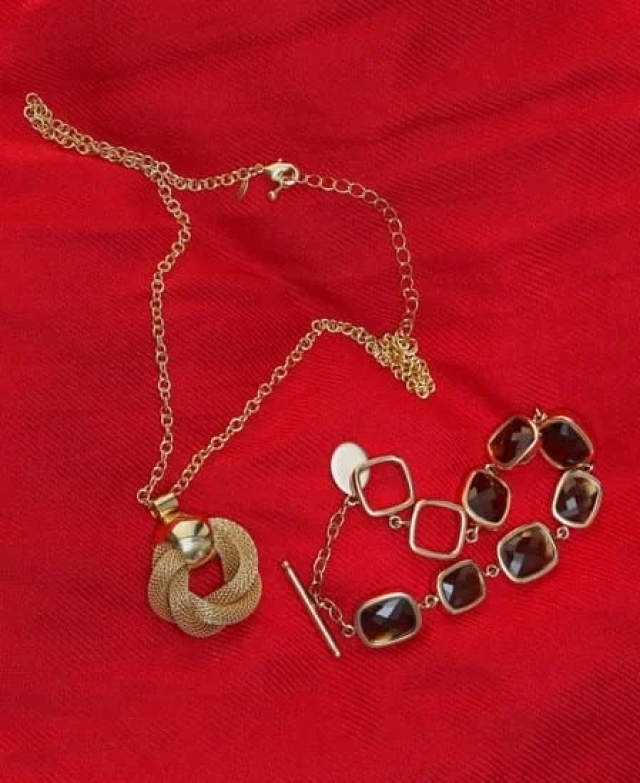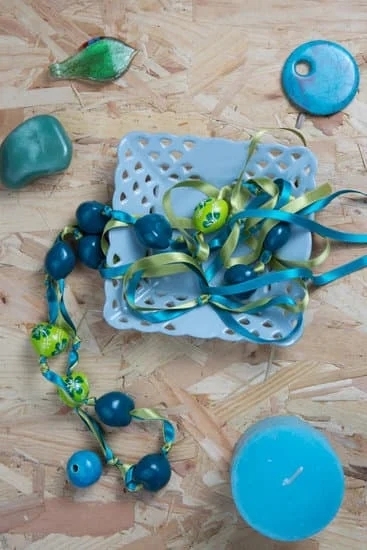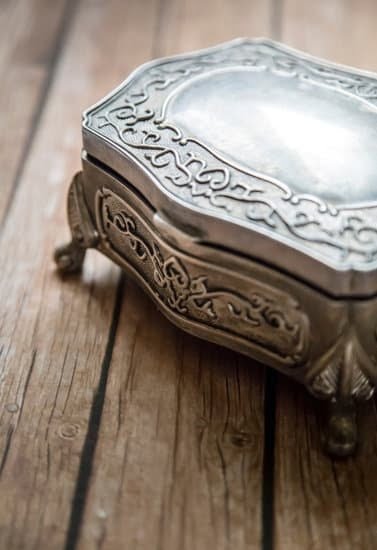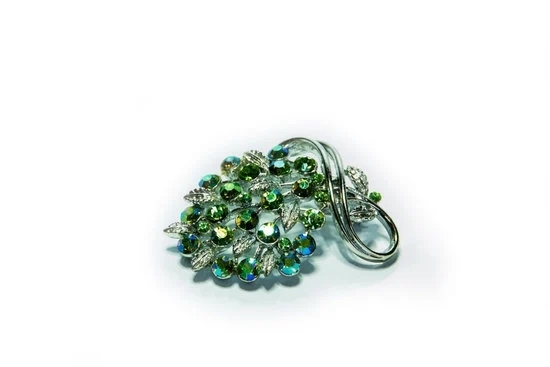Art Deco period jewelry is characterized by a distinct style that was popularized in the 1920s and 1930s. Often featuring stepped forms, bold geometric patterns, and even cubist shapes, art deco jewelry is known for its bright enamels which often feature motifs of birds, flowers or fruits.
This type of jewelry was usually crafted from gold and platinum but sometimes featured semi-precious stones such as rubies, sapphires, turquoise and lapis lazuli. Due to its combination of elegance and daringly modern designs, many consider Art Deco jewelry to be timeless classic pieces.
Construction and Materials The construction of Art Deco period jewelry are often intricate due to its mixture of techniques used in the creation process. Techniques include hand engraving, guilloche enameling, plique-à-jour enamel work and pave set diamonds that cover multiple surfaces of the piece. Less common materials used in the creation process were tortoise shell, lacquer work and synthetic materials like Bakelite.
Another great thing about this period is that a wide range of skills could be utilized from filigree to milgraining when constructing a piece. This helped make each piece unique and allowed artists to truly show their creative skill when crafting these iconic works of art.
Popularity at Time Art Deco period jewelry had unprecedented popularity during the time it was produced due mostly to glamourous figures like Wallis Simpson who often wore pieces from this era for state events or diplomatic functions while other popular figures like Queen Elizabeth II collected them as well.
Many wealthy people bought these pieces as an investment due to their rarity; meaning that more often than not any given piece was one off since most were handmade and designed by specialized craftsmen instead of created on mass production lines as they are today.
Characteristics of Art Deco Jewelry
The Art Deco period was a popular era of jewelry design, characterized by bold metallic modernist motifs and materials like gold, platinum and gemstones. Many pieces feature contrasting bright geometric shapes, architectural lines and large symmetrical designs. Art deco pieces stand out for their usage of brightly colored gemstones such as citrine, peridot, lapis lazuli and sapphires in combinations often paired geometrically.
Natural motifs were also incorporated into jewelry designs along with land animals or ancient symbols like the scarab beetle or an Egyptian Ankh cross. Gold was very often used alongside other precious elements like silver to add another dimension and depth to the piece.
Edwardian vs Art Deco
The Edwardian era was the predecessor to Art Deco which meant that many Edwardian design elements were still evident in many art deco styles. This includes delicate lace-like work, floral motifs and inset diamonds which were often visible on earrings necklaces and rings alike.
What made art deco unique however is its more streamlined look combined with bolder more abstract shapes than what were seen during Victorian or Edwardian times. This created a dramatic look compared to earlier eras which immediately identified a piece as being part of the art decorial movement.
Popular Artists
Some of the most recognized names for Art Deco period jewelry are Jean Patou and Cartier who everyone from Hollywood executives to royalty sported their pieces both then and now. Karen Holton was also an iconic designer from this time whose signature style included fine textured gold settings amongst art deco inspired geometric motifs.
Other notable designers include Rene Lalique who along with Jean Patou played a major role defining the art decorial style. Many pieces designed by these artists are highly sought after by collectors worldwide for their timeless beauty as well as rarity due to the fact that few exist today.
Popular Art Deco Styles and Designs
The Art Deco period is widely acknowledged as one of the most influential eras in jewelry design, spanning from about 1925 to 1940 in Europe and the United States. During the Art Deco era, sophisticated pieces of jewelry were designed with modern geometric shapes that departed from traditional designs.
During this period, lines were straight and became geometric with a strong emphasis on abstract shapes such as triangles, rectangles and zigzags. Some common materials used during the Art Deco period included platinum, white gold, sterling silver and colored gems including tourmaline, citrine, aquamarine and amethyst.
Popular Design Elements
The applications of design elements mimic popular motifs of the time like automobiles, nature or geometric patterns including industrial mechanical elements such as gears which featured heavily in much of the designs created during this era. The most popular themes recognizable by those who appreciate vintage Art Deco jewelry are:
- Automobile Parts
- Norman influence
- Egyptian Mythology
- Machine Age influenced Design
Automobile parts were employed to create bold designs that feature wire wheels, taillights or aerodynamic bodies among others. This theme mirrored the rapidly increasing automobile industry that was prominent during this time period.
Innovative techniques developed for aircraft production allowed designers to create pieces with strong masculine presence while still achieving lightness in terms of weight. Fluid shapes where achieved through die-stamping techniques which offered interesting reflections when light caught them at different angles also greatly contributed to highlight male oriented designs characteristic of this time period.
Xanadu influence added oriental elements prevalent during this era by taking inspiration from Chinese pieces decorated with traditional figures employing cloisonné enamel effects in some pieces occasionally seen with jade cabs set among filigree details.
Egyptian mythology was extremely popular role for jewels whose motifs combined sun rays tips adorned with gemstones creating an eye-catching effect while talking shapely art deco brooches featuring Tutankhamen masks surrounded by variously shaped gemstone settings accompanied by cabochon rock crystals displaying layers of detail typical for fashion icon Edwardian Era predecessors desired by wealthy customers mostly centered around London.
Ultimately these ancient cryptograms blended beautifully into overall design element taken from machine age mixed into aesthetically pleasing concept devoid of intricate traditionalist motifs preferred over prior eras beloved by majority aficionados keeping on changing markets true favouritism throughout new epoch.
Common Materials used in Art Deco Jewelry
During the Art Deco period, from around 1920 to 1940, designers Experimented with a variety of materials and techniques in their jewelry. For example, they incorporated the use of new precious stones and multiple materials within the same piece of jewelry.
The most commonly used material during this time was platinum. It was often combined with diamonds as a popular choice for engagement rings. This is because it has a high polished silver color which makes diamonds stand out even more. Additionally, platinum is stronger than gold and will not tarnish or wear away as quickly as gold when exposed to oxygen or other elements.
In addition to platinum, other metals such as white gold and yellow gold were also used in Art Deco jewelry designs. Silver was also popular, however it was typically not used for ring bands due to its softness compared to other metals.
Gold-filled jewelry became increasingly popular during the Art Deco period due to its affordability compared to solid gold pieces – there were many intricate yet affordable pieces made with this combination of metal alloy and gold plating which make them stand out from the average jewellery piece.
Semi Precious Stones
Semi precious stones such as amethyst, coral, aquamarine and topaz were also commonly seen in many Art Deco pieces of jewelry. They were often set alongside diamonds or other precious gemstones for added color and texture. One particularly noteworthy piece that included semi-precious stones was Cartier’s iconic “Tutti Frutti” necklace – it featured several colored sapphires, emeralds, rubies and carnelian beads set into an 18 carat yellow gold base with an interwoven motif design.
Enamel
Enamel articulately adds colour and texture to Art Deco jewelley pieces due to its slight translucence when fired at high temperatures – this technique enabled jewelers to create vibrant hues ranging from pastel shades against darker backgrounds thereby creating incredibly effective contrast and depth across different pieces of jewellery.
The most common enamel colors used during this time were blue, green, black and red; these could be either subtly displayed in order showcase intricate details on jewellery items or brightly displayed in order to draw attention towards important features such as engravings or motifs on rings.
Notable Artists and Designers of the Art Deco Era
The Art Deco period, from around 1910 to 1940, saw many notable jewelry designers. A Parisian movement, it was characterized by geometric shapes and linear motifs. Among these influential artisans were Louis LeBeau, Philippe Février-Vionnet, Charles and Ray Eames, Jean Fouquet, and René Lalique. These masterful artisans created dazzling pieces that showcased a wide variety of materials.
Louis LeBeau
Louis LeBeau was best known for his use of gold in his works. His signature style featured bold geometric shapes with an emphasis on linear lines. He championed the use of platinum as well, making it a popular material in Art Deco jewelry design until its lavishness eventually led to its decline after World War II. His elaborate designs quickly found fame as he continued to experiment with new patterns and techniques throughout his career.
Philippe Février-Vionnet
Turning away from the cold metallic look of previosu styles, Philippe Février-Vionnet’s passionate designs focussed on organic motifs such as flowers and fused elements from Baroque artistry with modern sensibilities. His detailing aspired to break out beyond traditional boundaries that often limited jewelry to fully round circles or other one-dimensional shapes. Instead he used curving platinum settings to border elongated diamonds and precious stones for a 3 dimensional appearance unlike any that had been seen before.
Charles and Ray Eames
The American husband-and-wife team of Charles and Ray Eames are remembered mostly for their modern furniture designs but also crafted some stunningly intricate pieces during the Art Deco period as well.
Initially inspired by the layered approach incorporated in Japanese lacquer ware techniques they began experimenting with further complexity through technological advances offered by modern metals allowing them to fashion multi faceted pieces featuring multiple levels thereby introducing further depth into jewelry designs not seen before the introduction of these two artists’ works in this era.
Shopping for Art Deco Jewelry
The Art Deco jewelry period lasted from approximately 1915 to 1930 and spans a wide range of styles and influences. During this time, fashion trends often reflected on changes in society, from high-society class to greater world events such as the Great War and change of monetary systems.
Notably, Art Deco is known for its diverse range of colors with gold trimmed stones, featuring geometric shapes and patterns within a piece such as rounded edges, starbursts, squares and rectangles. This combination of metalworked designs alongside an interest in the aesthetics were reflective throughout the era’s jewelry.
Today’s shoppers can purchase new pieces that emulate the iconic aesthetic or go for older vintage pieces if they are looking for the real deal. A modern take on Art Deco could involve materials such as stainless steel braces rather than traditional precious metals like white gold or yellow gold as well as opals instead of diamonds. Not all vendors may offer a comprehensive variety however there are many shops online offering a wide selection at different price ranges.
Vintage pieces will carry with them their own uniqueness due to their age and condition. Relics from this era rarely come pristine condition due to everyday wear over time so buyers should be aware that these pieces should be regarded as lovingly worn and enjoyed – although there are many Jewelers with specialist skills who can bring a piece back to life if needed.
Overall they remain popular these days as an expression of elegance and luxury appropriate for any special occasion. With its roots firmly embedded in history, Art Deco jewelry continues to evoke a unique identity in today’s market place where simplicity still has long lasting appeal and statement making prowess even after more than100 years.
Tips for Identifying Authentic Art Deco Jewelry
The Art Deco period was a short time of immense creativity, innovation and experimentation in the world of jewelry. It has been popular since its first appearance in Europe and America during the 1920’s until today, with vintage pieces becoming extremely sought-after collectables. Here are some tips to help you identify authentic Art Deco Period Jewelry:
- Look for unique designs that were developed during this era such as geometric forms combined with bold colours.
- Be aware of glass or acrylic ruby or sapphire substitutes used to imitate attractive gemstones.
- Inspect the overall design for evidence of reproduction, such as uniformity or machine made motifs which would not have existed before the 1950’s.
- Specifically look for three-dimensional craftsmanship unique to genuine pieces such as lace filigree work, engraved designs with subtly textured surfaces, carved images (flower petals) and enamel painting techniques.
- Authentic pieces from this era typically show signs of age through tarnish, discolouration or wear on metal parts.
A great way to determine the authenticity of any art deco jewelry is by examining hallmarking located on each piece. Many manufactures at this time marked all manufactured items with a symbol/logo representing their branding and signature.
Dating back to pre-20th century these markings include carat weight markings (for gold items), silver hallmarks (925) and various other country specific symbols indicating jewellery makers within their respective local markets. For example, unusual ‘English Hall Marks’ includes a crowned lion passant for identifying sterling silver from 1919 onwards.
How about decoration? Many authentic art deco period jewels used enamel highlights across intricate geometrical designs featuring fan shaped and wave motifs containing colorful beads imitating pearls or opal stones that added extra flair beyond the simply elegant shape structure native at the time.
Finally – pay attention to fastenings; many manufacturers adopted special clasp systems particular to certain periods making them easily recognizable when compared against those adopted during later eras such as double pin clasps characteristic of piece created between 1925-1935.
How to Incorporate Art Deco Jewelry into Your Wardrobe
The Art Deco period of the 1920s and 1930s has marked a distinct era in fashion history with its iconic use of geometric shapes, bold colors, and luxurious textures. In particular, Art Deco jewelry is best known for its statement-making use of geometric lines and curves.
Its vibrant colors create an elegant yet modern look that can be incorporated into almost any type of wardrobe. The key to pulling off an Art Deco look is to pick pieces that complement the other items in your closet.
When selecting Art Deco jewelry to incorporate into your wardrobe, there are many options available. For example, you can opt for a classic necklace made from brightly coloured stones such as sapphire or emerald or choose something simpler like a pendant charm that features intricate designs. There are often collections of vintage earrings that feature plush velvet materials as well as pieces with larger stones such as diamonds and rubies.
Additionally, you can make use of brooches which have become increasingly popular over the years due to their ability to be worn either together or separate. This allows you to create versatile ways to wearing accessories each time you go out.
You can also explore different metals and finishes depending on the occasion or season you’re dressing for. From gold plated filigree necklaces to rose-gold rings set with precious gemstones, there’s truly no limit when it comes to experimenting with Art Deco jewelry styles.
Furthermore, if you’re looking for more casual options or just want a little bit of sparkle during the day, look into searching for unique pendants made up from small gems and metals like platinum and silver – they’ll add subtle glamour without overpowering your outfit.
Caring for Your Art Deco Jewels
The Art Deco period of jewelry making was a time of great creativity, experimentation and new capability in metalwork. It represented the transition from more formalized traditional jewelry to modernism. Commonly referred to as “the great age of machine age design”, it was an exciting time for artisans who were able to experiment with various forms, textures and mediums.
Jewelers during the Art Deco period focused on the combination of precious metals, such as platinum and gold, with hard stones like diamonds, rubies and sapphires. Their designs were characterized by geometric shapes, abstract motifs and bold lines which were often complemented with intricate detailing. By incorporating several different techniques at once they created pieces of jewelry that could be considered works of art as well as wearable pieces.
When caring for these beautiful art deco jewels, special attention should be paid to prevent unnecessary wear or damage. Prongs should be checked regularly for signs of weakening or looseness that could lead to potential loss of gems which are set within them as well as scratches or chips on the surface over time if not addressed quickly enough.
Remove your jewelry before engaging in activities that may cause harm to the piece; swimming is an example since certain chemicals used in pools may cause harm to some metals when exposed for extended periods of time.
To clean Art Deco jewelry safely you can use a soft cloth moistened with lukewarm soapy water for light cleaning followed up by polishing with a soft dry cloth afterwards. In order to maintain its original shine it should be professionally cleaned on occasion by your jeweler using industrial methods using steam or other specialized treatments however ensure delicate parts like enamel work are taken care off per each jeweler’s instructions.
Lastly keep your pieces well organized in individual boxes/pouches away from direct sunlight when stored in order to preserve it properly over time; finally apply proper maintenance depending on what stones are set in place and the results will go a long way towards preserving this unique piece forever.

Welcome to my jewelry blog! My name is Sarah and I am the owner of this blog.
I love making jewelry and sharing my creations with others.
So whether you’re someone who loves wearing jewelry yourself or simply enjoys learning about it, be sure to check out my blog for insightful posts on everything related to this exciting topic!





